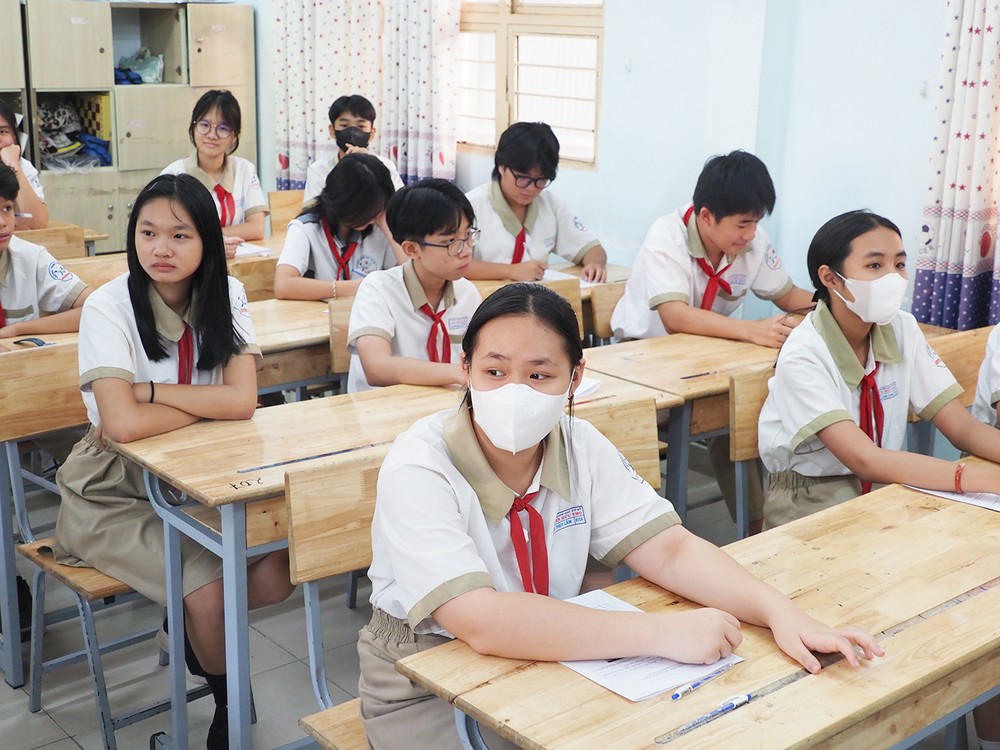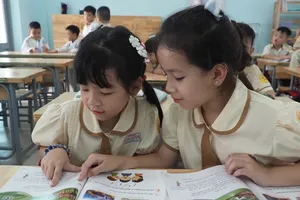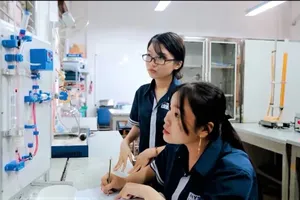
It is visible that localities especially in some large urban, industrial, and export processing areas, are short of educational facilities and local administrations have been managing to build more schools; consequently, public schools have large size classes and admission of sixth graders and tenth graders are a headache for school managers.
For example, in Hanoi, almost every school year the number of students increases sharply. According to the Hanoi Department of Education and Training, the number of students increased excluding preschool by about 70,000 in the 2024-2025 academic year compared to the previous school year, which means Hanoi administrations should build dozens of new schools.
However, the construction of new schools often cannot keep up with the needs of learners, leading to a large proportion of students having to study in non-public schools causing intense pressure on the tenth-grade entrance exam.
In recent years, many students in Hanoi, especially in suburban areas, have tended to choose continuing education to avoid the pressure of the tenth-grade entrance exam.
Meanwhile, in this new school year, Vinh City of Nghe An Province in the Central region is facing difficulties in the tenth-grade enrollment with more than 6,000 ninth-grade students, an increase of 800 students compared to the previous school year, but only three public high schools are located in Vinh City. Therefore, each school will have to add three more public classes. In recent years, with the pressure of the tenth-grade public high school entrance exam in Vinh City, many candidates have switched to registering for high schools in neighboring districts to increase their chances of admission.
In 2023, the Hanoi Department of Education and Training proposed that the Ministry of Education and Training apply a special mechanism in enrolling students in tenth grade in public high schools in districts and some district areas bordering the inner city area. The Department suggested increasing the number of classes/schools, and the number of students/classes. Moreover, the Department asked for permission to replace land area per student with usable area per student.
In fact, large size classes due to the lack of schools and classrooms mainly occur in big cities such as Hanoi and Ho Chi Minh City. A new urban area that grows up has a population equivalent to a ward, and each ward must have at least one public preschool or primary school. But in reality, in many places, public schools still lack much compared to the learning needs of people in the area. That's why the authority of Hoang Mai District in Hanoi had to let parents draw lucky lots to compete for a place in preschool which has caused a debate in public opinion.
Recently, the Ministry of Education and Training asked for opinions on the draft circular amending, supplementing and abolishing a number of articles of regulations on physical facility standards for preschools, primary schools, middle schools and high schools
However, it should be seen that increasing the number of classes/schools is a big difficulty for inner-city schools, which have limited areas and are difficult to expand. Therefore, amending the regulations on physical facilities standards for preschools, elementary schools, middle schools, high schools and multi-level schools should only be considered a temporary solution. The fundamental solution is that local administrations provide more land funds for the construction of more public schools to meet the learning needs of people, especially in densely populated areas or areas with industrial parks. Not all people can afford the tuition fees of non-public schools, which are much more expensive than public schools.
At the same time, it is necessary to continue to have strong policies to support the development of non-public schools to attract students from more affluent families while investing more in the vocational schools and making students and parents understand rightly about vocational education. Solutions to attract students to vocational training schools or non-public schools aim to reduce pressure on overcrowding in public schools, but must still ensure learners' rights, quality of education, and fairness in access.
























